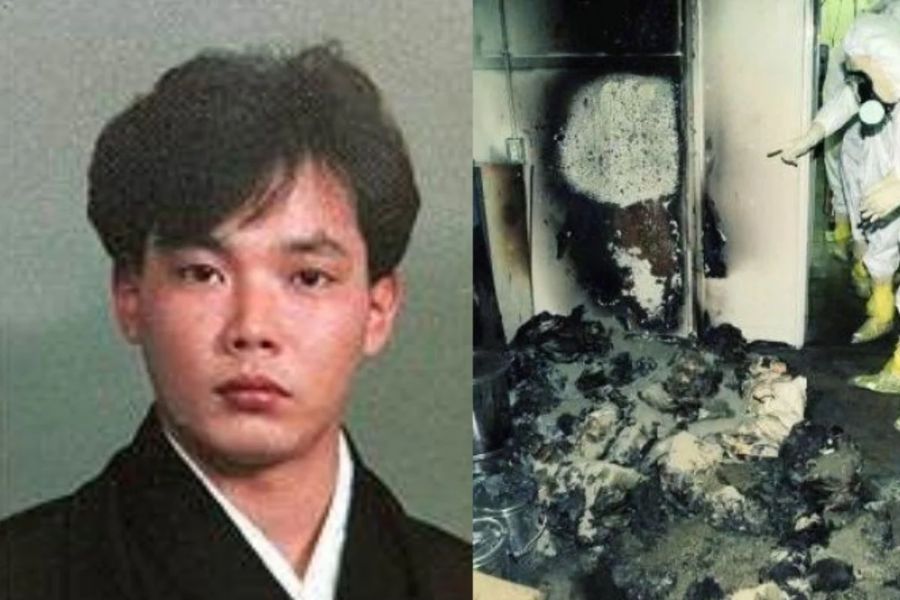Unveiling The Tragic Story Of Hisashi Ouchi's Injuries
The horrific injuries sustained by Hisashi Ouchi are a stark reminder of the catastrophic consequences of radiation exposure. In 1999, Ouchi became the victim of one of the most infamous nuclear accidents in Japanese history, which not only altered his life but also left a significant mark on public awareness regarding safety protocols in nuclear facilities. His case serves as a chilling account of what can happen when safety measures fail, highlighting both the physical and emotional toll of such a disaster.
Hisashi Ouchi was a young nuclear plant worker at the Tokaimura facility in Japan. His life took a devastating turn when a criticality accident occurred, resulting in a substantial release of radiation. This incident not only led to his suffering but also ignited widespread concern about the safety of nuclear energy and the protection of workers in such high-risk environments. Ouchi's injuries and the subsequent media coverage sparked debates about the nuclear industry and the measures in place to safeguard employees.
As we delve deeper into the details surrounding Hisashi Ouchi's injuries, it is essential to understand the full extent of his suffering and the implications of the accident. From the initial events to the medical interventions that followed, Ouchi's story is one of resilience in the face of unimaginable pain. In examining his injuries, we can glean valuable insights into both the human experience and the need for stringent safety regulations in nuclear energy production.
Who Was Hisashi Ouchi?
Hisashi Ouchi was born on March 25, 1965, in Japan. He was employed as a technician at the Tokaimura nuclear fuel processing plant in Ibaraki Prefecture. As a dedicated worker, Ouchi was committed to his job and had aspirations for a promising future. However, his life took a tragic turn on September 30, 1999, during a routine operation that led to one of the most catastrophic nuclear accidents in history.
Hisashi Ouchi's Biography
| Attribute | Details |
|---|---|
| Name | Hisashi Ouchi |
| Date of Birth | March 25, 1965 |
| Occupation | Nuclear Plant Technician |
| Accident Date | September 30, 1999 |
| Location | Tokaimura, Ibaraki Prefecture, Japan |
| Status | Deceased (2000) |
What Were the Circumstances of Hisashi Ouchi's Injuries?
The catastrophic event that led to Hisashi Ouchi's injuries occurred during a routine operation involving the handling of uranium. Workers at the Tokaimura facility were tasked with mixing a solution that contained enriched uranium. Unfortunately, safety protocols were not followed, leading to a criticality accident. A self-sustaining nuclear chain reaction was initiated, resulting in a massive release of radiation.
How Did Hisashi Ouchi's Injuries Manifest?
In the aftermath of the accident, Ouchi was exposed to an estimated 17 sieverts of radiation, a dose that is lethal to humans. The immediate effects of his injuries were catastrophic:
- Severe radiation burns covering much of his body
- Acute radiation sickness, leading to symptoms such as vomiting, hair loss, and immune system failure
- Severe damage to internal organs, including the gastrointestinal tract
What Were the Medical Interventions Following Hisashi Ouchi's Injuries?
Following the accident, Ouchi was rushed to the hospital for emergency medical treatment. The medical team faced a daunting challenge in attempting to save his life:
- He underwent extensive decontamination processes.
- Doctors administered high doses of supportive care to combat radiation sickness.
- Ouchi was placed in isolation to prevent infections due to his weakened immune system.
Despite the medical interventions, Ouchi's condition deteriorated rapidly. He suffered from multiple organ failures and was placed on life support. His injuries were so severe that doctors faced ethical dilemmas regarding the continuation of treatment.
What Impact Did Hisashi Ouchi's Case Have on Nuclear Safety Regulations?
The tragic story of Hisashi Ouchi's injuries brought significant attention to the safety protocols in the nuclear industry. Following the incident, there were widespread calls for reform:
- Increased scrutiny of safety measures in nuclear facilities.
- Implementation of stricter training programs for workers handling radioactive materials.
- Establishment of emergency response protocols for radiation-related incidents.
Ouchi's case serves as a stark reminder of the potential consequences of negligence in the nuclear sector. It contributed to a broader dialogue about the balance between the benefits of nuclear energy and the inherent risks involved.
How Did Hisashi Ouchi's Family Cope with His Injuries?
Throughout Hisashi Ouchi's ordeal, his family faced immense emotional and financial challenges. The stress of witnessing their loved one suffer from devastating injuries took a toll on them. They were confronted with difficult decisions regarding his medical care and ultimately had to grapple with the reality of losing him.
What Were the Last Days of Hisashi Ouchi Like?
Hisashi Ouchi passed away on December 21, 2000, after enduring 83 painful days in the hospital. In his final days, he was surrounded by his family, who provided comfort and support. His death marked the end of a tragic chapter, not only for his family but also for the nuclear industry in Japan.
What Can We Learn from Hisashi Ouchi's Injuries?
The story of Hisashi Ouchi's injuries serves as a powerful reminder of the importance of safety in high-risk industries. Some key takeaways include:
- The necessity of strict adherence to safety protocols.
- The importance of training workers in emergency response and safety measures.
- The need for continuous improvement in safety regulations within the nuclear sector.
In conclusion, Hisashi Ouchi's tragic injuries and the circumstances surrounding them underscore the critical need for vigilance in ensuring the safety of workers in hazardous environments. His story continues to resonate as a cautionary tale, urging the nuclear industry and society as a whole to prioritize safety and care for those who work at the forefront of energy production.
Unveiling The Family Life Of Kamala Harris: Has Kamala Harris Got Children?
Unraveling The Mystery Of The Chase Jones Crash
Unveiling The Truth Behind Hisashi Ouchi: The Real Photo And His Tragic Story


